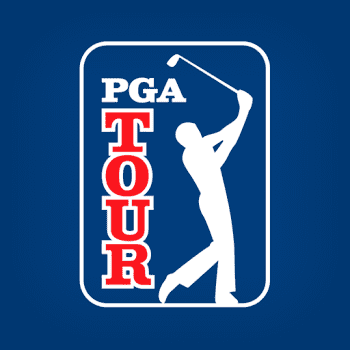The PGA TOUR used to be called the Tournament Players’ Division (TPD). It was a division of the larger Professional Golfers’ Association (PGA) of America. The PGA of America is a trade association with a membership of over 12,000 golf club professionals. So, the difference between a PGA Tour professional golfer and a PGA of America golf professional is that the Touring pro makes his living traveling about and competing regularly in golf tournaments conducted by the PGA Tour, whereas the club pro makes his living in a certain location by serving members of a golf club associated with a particular golf course. However, most, if not all, of the members of the PGA Tour are also members of the PGA of America. But, of course, it is not true in reverse.
In a sense, the American pro Tour was created by the PGA of America. It was the club professionals who started the PGA Tour way back in the 1920’s and 1930’s. Pros who had club jobs in the north had a few months off work during the cold winters. Wanting to play some competitive golf, they trekked south and created a few tournaments mostly in Florida. In those early years, it wasn’t feasible to make a living playing pro golf full time on this fledgling Tour. Professional golfers who competed in such tournaments also needed to have club jobs during the remainder of the year in order to make a living.
In late 1968, the TPD severed its relationship with the PGA of America. It was the shakiest period in the history of what is now called “the PGA Tour.” During those days, emotions ran high in both professional golf ranks regarding the Tour’s break away from its parent organization. The major cause of this split was the number of club professionals who were allowed to compete in Tour events. Through the years, this number gradually was being decreased. Wherever a Tour event was held, many local club professionals wanted to test their honed golf skills and gritty determination by teeing it up against the touring pros. After all, they were regarded as the best golfers in the land. Now, these club pros were being shoved out of these tournaments which the club pros regarded as the creation of their own organization—the PGA of America.
The reason was that the competition was increasing on the Tour. More pro golfers wanted to play the Tour full time. The maximum number of competitors in tournament fields was kept at 156 players or maybe a few less. During the winter, when there was less daylight, tournament fields might be reduced to a total of 144 players. Sometimes, there were a few invitational tournaments which had smaller fields, such as the Colonial Invitational in Fort Worth, Texas, but these were kept to a minimum.
In the 1960s, at many Tour tournaments there were an average of 100-150 players qualifying on Monday to get in the tournament. Each tournament started on Thursday that same week and ended Sunday for a total of four days of tournament golf. These Monday qualifying events often were staged at some other venue in that city. Tour members had to pay a $100 entry fee to the PGA Tour in order to compete in these single-day events. Whoever scored low enough gained access to compete in the tournament that week.
By the mid-1960s, it became necessary to further limit the number of players who were playing the Tour full time. Consequently, the Qualifying School, much later called popularly “Q-School,” was introduced in 1966. When that happened, you had to make it through the Qualifying School in order to be granted a Tour “card.” That PGA Tour membership card made you eligible to compete on the Tour. Without such a card, a pro golfer had to pay a $200 entry fee in order to compete in the Monday qualifying.
Having a PGA Tour card only allowed you to compete on the Tour to without paying more than the standard $100 entry fee for Monday qualifying. So, the card did not guarantee access to all tournaments. To do this, a player had to have what was called “exempt” status. An exempt player automatically was eligible to compete in all PGA Tour sponsored events except for invitational tournaments, which required in invite.
So, the main divisions among Tour pros were as follows: (1) major tournament winners, (2) tournament winners, (3) non-tournament winners. In professional golf throughout the world, even during the 1960s as it is today, there are four majors: the Masters, the U.S. Open, the British Open, and the PGA of America Championship.
So, when I started the PGA Tour, which was in 1964, there wasn’t any qualifying school. PGA Tour pros who have been through the intense pressure of the annual qualifying school to get on the Tour can hardly believe that. But in those days, all you had to do to get on the Tour was have two club professionals, who were members of the PGA of America, write a brief letter affirming that you were a good golfer, and you had to prove that you had at least $6,000 in a bank account.
How things have changed. In 2013, the PGA Tour eliminated its Qualifying School (Q-School). Now, the primary way in which pro golfers get on the PGA Tour is by competing on the Web.com Tour and finishing the year in the top 25 on its money winning list to be granted a card to compete on the PGA Tour the following full year. And each year on the PGA Tour, only those who finish the year in the top 125 on that money winning list keep their cards to be eligible to compete on that tour the full year.
The Web.com Tour is a third PGA Tour besides the regular PGA Tour and the Champions Tour. The Web.com Tour consists mostly of young pros in their 20s and early 30s who are trying to get on the regular PGA Tour. So, the Q-School for the regular PGA Tour no longer exists; but now they have a qualifying school to get on the Web.com Tour.
Back in the late 1960s, the PGA Tour was growing every year. Monday qualifying was getting tougher. The non-exempt players—those who had to qualify every Monday to get in a tournament—understandably complained the most. These Monday qualifying rounds were held each week to determine the remaining approximately 10-50 players in the field of each tournament. These qualifiers complained that too many club pros were being allowed to take up spots in the qualifying field. I agreed. About 50-150 full time Tour players were being turned away in each Monday qualifying. It didn’t seem fair that several club pros, most of whom had club jobs that they could depend on for their living, would take up spots that could be given to full time players. Those players were spending hundreds of dollars per week in expenses to be out on Tour, and oftentimes they weren’t qualifying to get in the tournaments. Of course, we all agreed that a few of these club pros should be allowed to play because they were good players.
Many club professionals were angered over the Tour’s break with the PGA of America. They thought of the Touring pros as a bunch of prima donnas. As a member of the Tour, for a while I didn’t feel very comfortable going into some pro shops at golf clubs. Even on Tour, there were a few players who objected to the players’ decision to cut loose and go independent of the PGA of America. Veteran Tour player Sam Snead was one who voiced his disapproval of the split. But then, Sam never had to worry about qualifying to get into any tournaments. Plus, Sam reportedly had a lot of loot stashed away in a bunch of tomato cans in his backyard! He didn’t have our worries.
I was chosen as an advisory player to the new players committee that would oversee the Tour. During the week of the tournament at Westchester Country Club, in Rye, New York, a meeting was held in which we decided what would be the name of our new organization. I can’t remember now who all of these players were. I do recall they included Lionel Hebert, Gardner Dickinson, Bob Goalby, and Dan Sikes, who had a law degree. In that meeting, various names were then proposed and a vote was taken. Guess what! I was the rebel who proposed the name that was chosen—the Association of Professional Golfers (APG). But it wouldn’t last very long.
The players’ committee decided that, like other American professional sports organizations, we needed a commissioner to lead and operate the Tour. It was felt that since our reputation was on the line, he should be a man of impeccable integrity.
Early that fall, we were playing the Oklahoma City Open. The PGA Tour Bible Study was held earlier than usual during the evening so that its member pros could still attend a players’ meeting that had been scheduled for that evening. The players’ committee frequently held meetings during this period of time to inform the players of recent developments, especially concerning the split, and allow for open discussion. Sometimes during these player meetings, tempers would flare. But no one was penalized two strokes or fined for “conduct unbecoming a professional golfer,” as it stated in our official book.
A small number of pros attended the PGA Tour Bible Study earlier that evening. Immediately afterwards, a discussion ensued about the Tour’s split. It emerged that some of us Bible toters were also split about this Tour split. Jim Hiskey and Dave Ragan opposed it, whereas Babe Hiskey (Jim’s brother) and I favored it. As Babe and I stood up to leave to attend the players’ meeting, Jim and Dave said, “We’re going to stay here and pray that God works this thing out.” They told us they would pray that God would “raise up someone to settle this dispute.”












